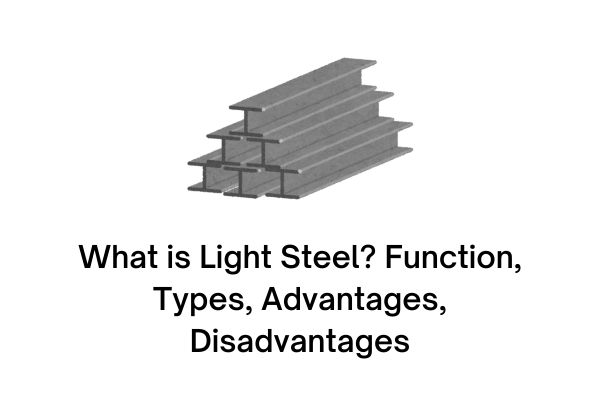Light steel is classified as high-quality steel that is lightweight and thin, but its strength is not less than that of ordinary steel. The definition of light steel is a material used for roof construction of buildings.
Light steel is used for roof construction of buildings because it is considered more practical, durable and long-lasting. The use of light steel as a building material has been in use for a long time.
Light steel is believed to have many advantages and disadvantages compared to ordinary steel. Below is some information about structural steel:
Daftar Isi
What is Light steel
Light steel is a material made of metal with properties that are thin, lightweight, flexible, and non-rusting. Generally, light steel is made of a mixture of zinc and aluminum.
The result is a product that is strong and sturdy. It is not surprising that light steel is often chosen as a building material, especially for making building roofs.
Light Steel Profile Sizes
The shapes or profiles of light steel that are very commonly found in the market are the C-profile and the batten profile. Each profile has certain features and characteristics that make it different from the others. These two light steel profiles are usually differentiated based on their size.
The C profile sizes commonly used in roof frames are 75mm x 35mm, 55mm x 25mm and 85mm x 45mm. Meanwhile, the common batten profile sizes are 45mm x 55mm and 35mm x 45mm. Both depend on the manufacturer’s usage.
Light Steel Content
According to the definition of light steel, this material is steel that is made from a mixture of zinc and aluminum. Therefore, it has a low carbon content and better magnetic properties than conventional iron and steel.
Light steel has a maximum carbon content between 0.16 percent and 0.29 percent and a melting point that tends to be between 1450 degrees Celsius and 1520 degrees Celsius. Light steel has a low melting point compared to conventional steel.
The Function of Light Steel
Light steel manufacturing is often used as a material for building construction, roof structures, and material in civil engineering. The function of light steel is often associated with the manufacturing of buildings, houses, or structures.
Light steel is not only used for civil engineering, sometimes it can also be used for manufacturing cars, furniture, appliances, wires, home fencing, and decorative equipment. Therefore, it is not surprising that light steel has robust properties.
Types of Light Steel
There are many types of light steel available in the market. The types of light steel that exist are usually the best to use. The types of light steel available in the market include the following.
1. Zincalum
This type of structural steel is made from a mixture of aluminum, zinc, and silicon. This type is the most durable and long-lasting light steel. In fact, it is often used as a roof framing material due to its strength.
2. Galvalume
It is a light steel coated with an aluminum-zinc mixture using a continuous hot-dip process. Galvalume can be painted and has quite good corrosion resistance, which is why it is often used as a material for making fences.
3. Galvanized
It is considered the last type of light steel available in the market and is appreciated by many people for its rough texture. Galvanized light steel is coated with zinc oxide to prevent rusting. Due to this property, galvanized material is often used for automobile manufacturing.
Example of Light Steel
Unlike the different types, this example of light steel is an example of a product made of a type of light steel. Examples of light steel that are commonly used and sold in the market are:
- Hollow is an example of light steel made of galvanized material. Its characteristics are that it is in the shape of a block, the edges are square, the inside is empty and more shiny. Hollow light steel serves as canopy and ceiling material.
- Rafters or trusses are examples of light steel made of zincalume material because one of the mixtures is zinc. Its characteristics are that it has no inside, is long and does not shine. Works as a roof frame and can be used as a roof tile.
- Spandex, an example of light steel made of galvalume material. Its characteristics are that it is a wavy, uneven sheet, has no inside and is colorful. Used for canopies and wall cladding.
Advantages of light Steel
Due to its use as a building material, light steel often has advantages that other materials do not have. The definition of light steel itself is a metal material that is made from a mixture of building or construction materials.
Therefore, light steel has the advantages of being easy to shape, rust-proof and anti-termite, lightweight, environmentally friendly, absorbs heat energy, is relatively inexpensive, and the manufacturing process is simple and not difficult. This is why light steel is widely used.
Disadvantages of Light Steel
Light steel has the disadvantages of being relatively weak, too flexible, and therefore difficult to shape, cannot be bent too much and therefore cannot be used to build certain buildings, and is prone to corrosion.
This is some information about light steel that is commonly used in building construction. Light steel is often understood to be a material that is made from a mixture of zinc and aluminum, making it strong and sturdy.
Read Also : Steel Structure Introduction and Its Benefits
